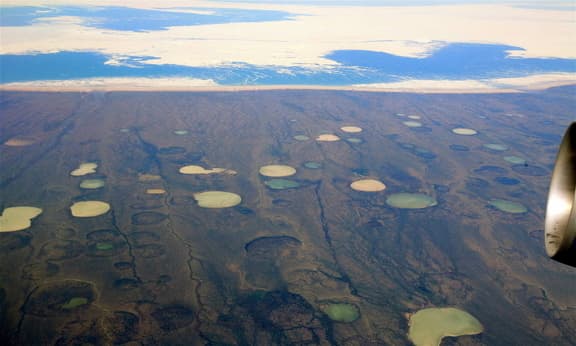Thawing permafrost a ticking time bomb

Former Australian prime minister Tony Abbott last year told an audience at the London-based Global Warming Policy Foundation, a think tank for climate change sceptics, that the “so-called settled science of climate change [is] absolute crap”.
In one way, Abbott, like contemporary researchers, is getting closer to the truth. Four years ago, scientists led by Eric Delwart of the University of California, San Francisco, uncovered a preserved virus in 700-year-old frozen caribou shit in Canada. The specimen was taken from ice in the far north of the country.
“The find confirms that virus particles are very good ‘time capsules’ … making it likely that many prehistoric viruses are still infectious to plants, animals or humans”, Jean-Michel Claverie, from the Aix-Marseille University School of Medicine in France, told New Scientist magazine.
The problem is that frozen organic matter containing such viruses and bacteria is rapidly thawing. Of the forecast causes and effects of climate change, this is perhaps the least covered. But it is significant.
Permafrost, or frozen soil, covers up to 25 percent of the exposed northern hemisphere land area, primarily northern Russia and Canada, and acts as a freezer preserving microbes, and holding carbon and toxic mercury deposits.
As temperatures rise, matter frozen for thousands of years is being exposed. Relatively stable conditions, in place since the last Ice Age, are giving way to something more chaotic. Brian Resnick, a science reporter at Vox.com, provides this analogy:
“You can think of the Arctic permafrost as a giant kitchen freezer. If you put organic (carbon-based) matter in your freezer, the food will stay intact. But if the freezer compressor breaks, it will slowly heat up.
“As it heats up, bacteria begin to eat your food. The bacteria make the food go rotten. And as the bacteria consume the food, they produce carbon dioxide, methane, and other gases and chemicals that smell terrible.
“For tens of thousands of years, permafrost has acted like a freezer, keeping 1,400 gigatons (billion tons) of plant matter carbon trapped in the soil. (That’s more than double the amount of carbon currently in the atmosphere.) …
“When the bacteria turn the carbon in the Arctic into CO2 and methane, it accelerates a feedback loop. The more methane and carbon released, the more warming. The more warming… you get it.”
This feedback loop is already happening in Arctic regions, where warming is occurring at twice the rate of the rest of the planet. This has scientists most alarmed. Sue Natali, from the Woods Hole Research Center in Massachusetts, explained to Public Radio International in 2015:
“In theory, we can control deforestation and land use change [and] we can control our fossil fuel emissions – but once permafrost starts to thaw, we cannot control how much carbon dioxide and methane is released by microbes into the atmosphere.”
A second aspect of this process, highlighted by research carried out by scientists such as Delwart and Claverie, is that the thawing matter is releasing not just gases, but long-preserved pathogens that could infect plants and animals.
The risks to humans are considered small. But Claverie worries. With the thawing of permafrost and the retreat of Arctic ice, new regions are being eyed for mining.
“We know, and the Russians know, there are a lot of resources there. Very precious metals, rare-earths, petrol, there is gas and gold”, Claverie told the Atlantic’s Robinson Meyer last year:
“Getting at the minerals and petroleum deposits throughout the Arctic, he says, will require moving a lot of permafrost – an amount properly measured in millions of tons …
“He imagines towering heaps of rotting permafrost stacked up next to mining cabins, their contents open to the sun and air and summer rain. ‘We are really reaching places where, if there are microbes infectious to humans or human ancestors, we are going to get them’, he says.”
The thawing of ice is also breaking down natural barriers and allowing the spread of existing bacteria and viruses into new areas, potentially infecting food chains. For example, in 2014, for the first time, a cat parasite that can cause blindness and abortions in humans was discovered in western Arctic beluga whale meat, eaten by local Inuit people.
“It’s not yet clear how the pathogen first reached the whales”, Emily Underwood wrote in Science. “One possibility is that the Inuit are keeping more cats as pets, because kitty litter flushed down the toilet is a major source of the parasite in the environment. But loss of Arctic ice is also likely eroding the ecological barrier that has previously protected beluga whales, allowing the parasite to move northward.”
These are areas that have been little researched. But they serve as reminders that human-caused climate change may have effects well beyond what is already being documented.